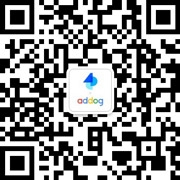本案例默认翻译为中文,点击可切换回原语言
已切换成原语言,点击可翻译成中文
理解诵读困难
案例简介:执行 这个项目中的印刷执行有两个方面。第一种是更明显的大破碎类型,旨在表明理解一个你无法识别的单词有多难 (注意,它们不是不可能的, 如果你足够努力,你可以弄清楚它是什么)-很像诵读困难。但是战略设计和放置一旦折叠起来,类型就会变得清晰。第二个不那么明显,但同样重要。字体、字母间距和所有 bodycopy 和信息文本元素的前导 (甚至背景颜色和类型颜色对比) 都旨在帮助阅读困难者阅读。 结果 超过 11,000 人在第一周访问了 Sydlexia 的网站,海报被下载了 34,000 多次。我们的海报帮助理解了诵读困难症,不仅仅是那些有诵读困难症的人,还有那些没有诵读困难症的人。 战略 尽管全世界估计有十分之一的儿童患有诵读困难症,但人们对它是什么的认识非常有限,对它是如何治疗的认识更少。大多数人有一个模糊的概念,即它与阅读困难有关,但不知道这意味着什么,也不知道它在现实世界中是如何体现的。因此,我们想首先帮助我们的观众理解阅读困难症在展示我们的教学方法如何帮助你理解它们之前,如何在简单的单词方面感到困惑, 本质上提供了一个现实世界中 sydlxia 如何帮助他们克服障碍的例子。 活动描述 由于问题在于文字,我们的解决方案在于字体。我们制作了一组印刷海报,这些海报不显示诵读困难者是如何看待单词的,而是说明理解一个你无法识别的单词有多难。这些海报是为了从他们的位置上撕开,邀请了网上的观众,在那里他们可以学习 “如何折叠这张海报”。我们以交互式折纸海报的形式创建了学习工具,可以折叠成海报上的单词所代表的对象。一旦正确折叠,海报会在折纸的侧面显示出解码后的单词,在诵读困难的头脑中形成单词和物体的连接。我们展示了阅读障碍患者面临的挑战以及创造性教育技术在帮助克服这些挑战方面的有效性。 概要 Sydlexia 是一个针对诵读困难儿童的学习机构。诵读困难症是一种很大程度上诊断不足的疾病,影响全世界十分之一的儿童。那些患有这种疾病的人甚至很难阅读最简单的单词。此外,众所周知,诵读困难的人思维方式不同,并且具有高度的创造性。传统的左脑学习技术对诵读困难症患者来说并不有效,而由视觉、触觉和空间刺激驱动的右脑方法更有效。我们的简报是提高对 sydlxia 与诵读困难症患者的工作及其治疗方法的认识。最终,他们想让更多的人进入他们的网站,该网站有关于诵读困难的更详尽的资源,并作为任何注册查询的门户。
理解诵读困难
案例简介:Execution The typographic execution in this project is represented in 2 aspects.The first is the more obvious large broken type, designed to show how difficult it can be to understand a word that you can’t recognise (notice, that they are not impossible, if you look hard enough you could make out what it is) - much like dyslexia. But with strategic design and placement once folded the type comes together it makes the word legible.The second not so obvious but equally important. The typeface, letter-spacing and leading (even background colour and type colour contrast) of all bodycopy and informative text elements are all designed to aid the way a dyslexic person reads. Outcome Over 11,000 people visited Sydlexia’s website in the first week and the posters were downloaded more than 34,000 times. And Sydlexia experienced a significant surge in online enquiries.Our posters helped make sense of Dyslexia, not just for those who have it, but also those who don’t. Strategy Even though an estimated 1 in 10 children worldwide have dyslexia, there is very limited awareness as to what it is and even less as to how it’s treated. Most people have a vague notion that it relates to having difficulty reading, but have no idea what that means or how it manifests in the real world. As such, we wanted to first help our audience understand how dyslexia may feel disorienting when it comes to simple words before demonstrating how our teaching methodology can help you make sense of them, in essence providing a real-world example of how Sydlexia helps them overcome their disorder. CampaignDescription Since the problem lay in words our solution lay in typography. We created a set of typographic posters that don’t show how dyslexics see words, but rather illustrate how difficult it can be to make sense of a word you can’t recognize.Created to be torn from their placements, the posters invited the viewers online where they could learn “how to fold this poster”. We created learning tools in the form of interactive origami posters that could be folded into the object represented by the word on the poster.Once folded correctly the poster reveals the decoded word emblazoned on the side of the origami, forging the connection of the word and object in the dyslexic mind. We showcased both the challenges dyslexics face as well as how effective creative educational techniques are at helping overcome them. Synopsis Sydlexia is a learning institute for dyslexic children. Dyslexia is a largely under-diagnosed disorder that affects 1 in 10 children worldwide. Those who suffer from it can struggle to read even the simplest of words.Additionally, it is understood that the dyslexic mind thinks differently and is known to be highly creative. Conventional left-brain learning techniques aren’t as effective for dyslexics, while, right-brain methods driven by visual, tactile and spatial stimulation are far more effective.Our brief was to increase awareness of Sydlexia’s work with dyslexics and their methodology to treating it. Ultimately, they wanted to drive more people to their website which has more exhaustive resources on the subject of dyslexia and that served as a portal for any enrolment queries.
Making Sense of Dyslexia
案例简介:执行 这个项目中的印刷执行有两个方面。第一种是更明显的大破碎类型,旨在表明理解一个你无法识别的单词有多难 (注意,它们不是不可能的, 如果你足够努力,你可以弄清楚它是什么)-很像诵读困难。但是战略设计和放置一旦折叠起来,类型就会变得清晰。第二个不那么明显,但同样重要。字体、字母间距和所有 bodycopy 和信息文本元素的前导 (甚至背景颜色和类型颜色对比) 都旨在帮助阅读困难者阅读。 结果 超过 11,000 人在第一周访问了 Sydlexia 的网站,海报被下载了 34,000 多次。我们的海报帮助理解了诵读困难症,不仅仅是那些有诵读困难症的人,还有那些没有诵读困难症的人。 战略 尽管全世界估计有十分之一的儿童患有诵读困难症,但人们对它是什么的认识非常有限,对它是如何治疗的认识更少。大多数人有一个模糊的概念,即它与阅读困难有关,但不知道这意味着什么,也不知道它在现实世界中是如何体现的。因此,我们想首先帮助我们的观众理解阅读困难症在展示我们的教学方法如何帮助你理解它们之前,如何在简单的单词方面感到困惑, 本质上提供了一个现实世界中 sydlxia 如何帮助他们克服障碍的例子。 活动描述 由于问题在于文字,我们的解决方案在于字体。我们制作了一组印刷海报,这些海报不显示诵读困难者是如何看待单词的,而是说明理解一个你无法识别的单词有多难。这些海报是为了从他们的位置上撕开,邀请了网上的观众,在那里他们可以学习 “如何折叠这张海报”。我们以交互式折纸海报的形式创建了学习工具,可以折叠成海报上的单词所代表的对象。一旦正确折叠,海报会在折纸的侧面显示出解码后的单词,在诵读困难的头脑中形成单词和物体的连接。我们展示了阅读障碍患者面临的挑战以及创造性教育技术在帮助克服这些挑战方面的有效性。 概要 Sydlexia 是一个针对诵读困难儿童的学习机构。诵读困难症是一种很大程度上诊断不足的疾病,影响全世界十分之一的儿童。那些患有这种疾病的人甚至很难阅读最简单的单词。此外,众所周知,诵读困难的人思维方式不同,并且具有高度的创造性。传统的左脑学习技术对诵读困难症患者来说并不有效,而由视觉、触觉和空间刺激驱动的右脑方法更有效。我们的简报是提高对 sydlxia 与诵读困难症患者的工作及其治疗方法的认识。最终,他们想让更多的人进入他们的网站,该网站有关于诵读困难的更详尽的资源,并作为任何注册查询的门户。
Making Sense of Dyslexia
案例简介:Execution The typographic execution in this project is represented in 2 aspects.The first is the more obvious large broken type, designed to show how difficult it can be to understand a word that you can’t recognise (notice, that they are not impossible, if you look hard enough you could make out what it is) - much like dyslexia. But with strategic design and placement once folded the type comes together it makes the word legible.The second not so obvious but equally important. The typeface, letter-spacing and leading (even background colour and type colour contrast) of all bodycopy and informative text elements are all designed to aid the way a dyslexic person reads. Outcome Over 11,000 people visited Sydlexia’s website in the first week and the posters were downloaded more than 34,000 times. And Sydlexia experienced a significant surge in online enquiries.Our posters helped make sense of Dyslexia, not just for those who have it, but also those who don’t. Strategy Even though an estimated 1 in 10 children worldwide have dyslexia, there is very limited awareness as to what it is and even less as to how it’s treated. Most people have a vague notion that it relates to having difficulty reading, but have no idea what that means or how it manifests in the real world. As such, we wanted to first help our audience understand how dyslexia may feel disorienting when it comes to simple words before demonstrating how our teaching methodology can help you make sense of them, in essence providing a real-world example of how Sydlexia helps them overcome their disorder. CampaignDescription Since the problem lay in words our solution lay in typography. We created a set of typographic posters that don’t show how dyslexics see words, but rather illustrate how difficult it can be to make sense of a word you can’t recognize.Created to be torn from their placements, the posters invited the viewers online where they could learn “how to fold this poster”. We created learning tools in the form of interactive origami posters that could be folded into the object represented by the word on the poster.Once folded correctly the poster reveals the decoded word emblazoned on the side of the origami, forging the connection of the word and object in the dyslexic mind. We showcased both the challenges dyslexics face as well as how effective creative educational techniques are at helping overcome them. Synopsis Sydlexia is a learning institute for dyslexic children. Dyslexia is a largely under-diagnosed disorder that affects 1 in 10 children worldwide. Those who suffer from it can struggle to read even the simplest of words.Additionally, it is understood that the dyslexic mind thinks differently and is known to be highly creative. Conventional left-brain learning techniques aren’t as effective for dyslexics, while, right-brain methods driven by visual, tactile and spatial stimulation are far more effective.Our brief was to increase awareness of Sydlexia’s work with dyslexics and their methodology to treating it. Ultimately, they wanted to drive more people to their website which has more exhaustive resources on the subject of dyslexia and that served as a portal for any enrolment queries.
理解诵读困难
暂无简介
Making Sense of Dyslexia
暂无简介
基本信息
- 广告战役: #Sydlexia-设计与品牌-cd68#
- 广告品牌: Sydlexia
- 发布日期: 2000
- 行业领域: 电视传媒 , 商务服务 , 影音娱乐
- 媒体类别: 海报/平面
- 广告语言: 阿拉伯语
- 媒介平台: 网络
- 获得奖项:
暂无评分
已有{{caseInfo.tatolPeople}}人评分
创作者
案例详情
涵盖全球100万精选案例,涉及2800个行业,包含63000个品牌
热门节日97个,23个维度智能搜索
-

项目比稿
品类案例按时间展现,借鉴同品牌策略,比稿提案轻松中标
-

创意策划
任意搜索品牌关键词,脑洞创意策划1秒呈现
-

竞品调研
一键搜索竞品往年广告,一眼掌握对手市场定位
-

行业研究
热词查看洞悉爆点,抢占行业趋势红利
登录后查看全部案例信息
如果您是本案的创作者或参与者 可对信息进行完善







